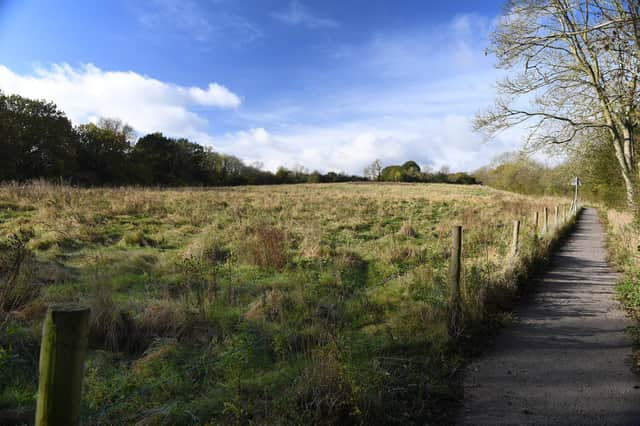What is the green belt and how would Harrogate look without it?


The green belt is protected areas of rural land where the building of new homes and businesses is only allowed in special circumstances.
Its supporters say green belts have preserved landscapes across the country, while critics claim they protect the rich, stop houses being built and encourage commuting by cars.
Advertisement
Hide AdAdvertisement
Hide AdBut what would Harrogate look like if its protected areas of land had never been created?
The green belt covers almost 36,000 acres across the district - equivalent to 11% of the total area.
It stretches along the district's southern boundary with Leeds and up between Harrogate and Knaresborough to stop the two towns merging. There is also an area in the east of the district that forms part of the York green belt which encircles the city.
Without the protection that the green belt offers, Harrogate and Knaresborough's built-up areas - which sit just half a mile apart - could have formed one.
Advertisement
Hide AdAdvertisement
Hide AdOther areas to the west including Otley and Ilkley could have also expanded ever-outwards and swallowed up the smaller settlements that surround them.
But the rules and regulations which make up green belt policy have not stopped developers coming forward with plans.
There have been almost 1,700 applications to Harrogate Borough Council in the protected areas since 2011. Most of these were for extensions and farm buildings, but others have been of some significance.
In early 2020, a developer behind plans for 210 homes on the outskirts of Wetherby near Stockeld Park was refused planning permission by both the council and a government inspector at appeal.
Advertisement
Hide AdAdvertisement
Hide AdOn the flip side, the construction of Harrogate Rugby Club's Rudding Lane ground would not have been possible if the council did not allow for "special circumstances" when plans were approved in 2013.
These are just two examples of when development can and can't take place in the green belt, with the task of deciding which circumstances are "special" enough to justify development often resulting in interventions by government inspectors.
Councillor Tim Myatt, cabinet member for planning at Harrogate Borough Council, said the authority attaches great importance to protecting the green belt and that doing so is a key part of local and national policy.
Advertisement
Hide AdAdvertisement
Hide AdHe said: "Any proposal for development in the district’s two green belts – namely the West Yorkshire green belt and the York green belt – would need to be in accordance with the National Planning Policy Framework (NPPF), which makes clear that any development should not be approved except in very special circumstances.
"Protecting the green belt is one of the core planning principles of the NPPF and something our adopted Local Plan also specifies."
The green belt between Harrogate and Knaresborough was reviewed in 1992 and minor changes were made when the district's 2001 Local Plan was adopted.
However, the boundaries were not reviewed when the most recent Local Plan was adopted in 2020 - something residents in Harlow and Pannal Ash say should have happened.
Advertisement
Hide AdAdvertisement
Hide AdDavid Siddans, secretary of Harlow and Pannal Ash Residents Association, said: "We would have liked to see the green belt extended to provide more protection to the landscape between Harrogate and Beckwithshaw.
"But that, we understand, would have required a formal review process, and Harrogate Borough Council was not receptive to the idea."
Mr Siddans also said it is the development of greenfield land - not green belt - which presents the biggest threat to the environment and local area which is facing the construction of hundreds of new homes.
He said these greenfield sites - which are untouched areas not previously built on - were seen as "easy pickings" when Harrogate's most recent Local Plan was being developed.
Advertisement
Hide AdAdvertisement
Hide AdMr Siddans said: "When the Local Plan was being prepared and sites were being sought to accommodate around 16,000 new houses, all the greenfields around the western arc which were not green belt were targeted for development.
"No major developments are proposed on the existing area zoned as green belt west of Harrogate.
"However, greenfield sites do not have the same protection, except that those located around the western arc are all within designated areas of special landscape value.
"In practice, the planning authority pays little attention to this protection, hence the massive and highly intrusive developments currently being proposed."
By Jacob Webster, Local Democracy Reporter